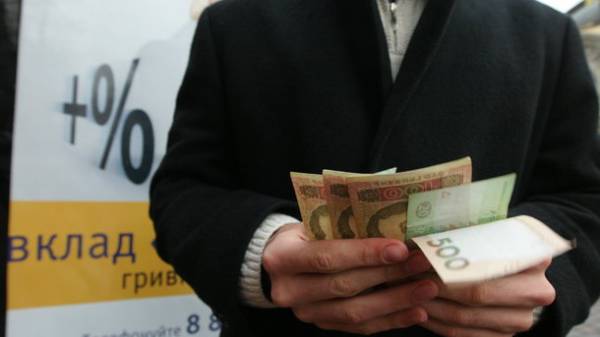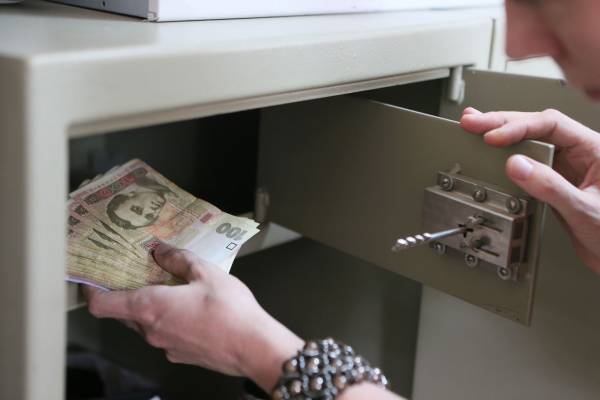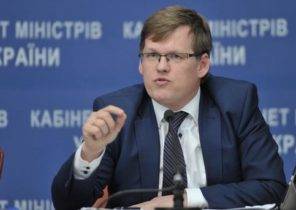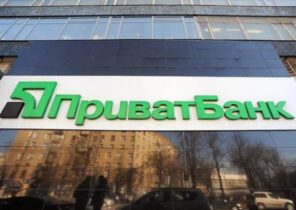
National Bank due to high inflation keeps interest rates unchanged, but banks all summer continued to reduce Deposit rates for the population. Although the average annual yield of hryvnia deposits exceed 14%, the largest finuchrezhdeniya already attract deposits at lower rates and see potential for further decline, says FinClub.
National Bank on Thursday again upheld a key indicator of the value of their resources is the discount rate. If in the first half he was actively reduced it from 14% to 12.5%, then in may, the NBU did not revise the rate once.
Interest on retail deposits in the banking system, this stability can not boast. Index UIRD, which monitors the situation in 20 banks with the largest Deposit portfolios, shows during the same period, more significant yield reductions, which did not stop even in summer: 12-month deposits have fallen since the beginning of the year from 17.74% to 14.65%, including in June by more than 1 percentage point Parallel count of the NBU to all banks and all types of deposits shows a decrease in the average yield of hryvnia investments from 17.3% to 13.7%.
At the end of the first half, 21 in the Bank, each of which was more than 1 billion UAH of hryvnia deposits had 125,7 billion, or 93.8 per cent of all national currency deposits. Among these banks 80,4% of deposits – 101, 1 billion UAH was collected for ten banks that are now offering annual Deposit, less than 14%. And only 11 large banks with less than 20% of their deposits attract rates of 14-17%. For example, the state PrivatBank recently offered rates above market, but now the situation is the opposite. At the end of August, he reduced the yield of annual hryvnia Deposit from 16.3% to 13%.
In General, the variance of rates on the market is huge. The lowest yield offered by banks with foreign capital – from 5.7% to 10%. 13% promise state PrivatBank, Oschadbank and Ukrgasbank. However, each Agency seeks to preserve the “special” increase to the rate.

Photo: “Today”
The NBU has repeatedly said that their monetary policy directed to the discount rate has become a real management tool the value of the hryvnia on the market. But the head of Department savings Privat Andrey Shulga said that the policy rate is not a determining factor in the cost of deposits.
“Banks take into account the size of the NBU discount rate, but a direct relationship between the discount rate and rates on deposits is not. The discount rate cannot be attributed to the main criteria, which influence the formation of interest rates on deposits”, – adds the head of sector of development of retail business of OTP Bank Yuri Ponomarenko.
The Deposit rate traditionally is determined by the capacity of the banks to make money on attracted deposits, in particular, on credit, and the willingness to “let go” of investors who came to the Bank just for the sake of high interest rates. Treasurer Altmanka Natalia Zhilenko explained that of the NBU discount rate tied to a standard liquidity regulation instruments of the national Bank: certificates of Deposit, overnight loans and long-term refinancing. The change in the discount rate reflects the yield on government bonds on the secondary market. But the dependence with the Deposit rates is not direct, but indirect. “As part of its liquidity banks are placed in instruments of the NBU, with a significant decrease in the discount rate could be reviewed and Deposit rates, “says Zhilenko. “It (the discount rate. – Ed.) benchmark the cost of resources for a period of one month”, – says Deputy head of Credit Dnepr Bank Andrey Moyseenko.
SEE ALSO
- Loans with a catch: what is silent in the banks, and that the Ukrainians should know
The main reason for the reduction in rates, according to bankers, is the need to reduce the cost of attracted resources for crediting of business and population. “The interest rate on the loan should be of interest to the client and must not exert significant pressure on its revenues,” – says Andrey Moyseenko.
But the credit activity of banks are not high enough to feel the acute need of funds. Shulga says that the number of large credit institutions, on the contrary, excess liquidity. Therefore, it makes no sense to offer high interest rates.
Ponomarenko said that banks that offer Deposit rates above the market, shortages of liquidity. “These banks are more limited in the tools to attract customers, therefore offer higher rates, while actively continuing to lend. We recommend you the most balanced approach to the analysis of Deposit offers a Bank in the market because of the abnormally high Deposit rate could signal including the lack of liquidity and high risks,” – says Moyseenko, because high interest rates help to attract new customers and retain old ones.
“Each Bank itself determines its pricing policy, depending on resource needs, not only for today but for the future. So if a particular Bank is, or planned projects that will require additional resources, it can more actively work on the market,” adds Shulga.
Short-term plans
In early autumn the banks can take a break in the trend of rate reductions. “This year the Bank three times reduced the rates on hryvnia deposits. In the coming months to continue to reduce not planned”, – said Deputy Chairman of the Board oschadbanka Anton Tyutyunov. “So far no such plans, but before the end of the year could see a further decline in interest rates. But, most likely, sharp cuts this year will not be”, – predicts Ponomarenko.
Such forecasts have a macroeconomic explanation. Chief economist of Alfa-Bank Alexei Blinov said that the state Treasury has accumulated in the accounts a record amount – more than $ 60 billionthat washed the hryvnia liquidity of the banking system.
“The amount of funds of the banks in the NBU Deposit certificates by Friday, September 15 fell to UAH 25 billion, which is an absolute minimum in the spring of 2015. In such circumstances, one should not expect a significant reduction in interest rates in local currency. However, the situation may change with the increased government expenditure in the last months of the year”, – says Alexei Blinov.
“If inflation will decisively decline to the predicted levels (7-8%. – Ed.) the rate will be stable, the economy is growing, then why not continue to cut rates? High risk – high interest rates. Low risk – low rates”, – says Andrey Shulga
Further dynamics of rates, according to market participants, will depend on many factors: current liquidity, lending activity, inflation and the situation in the banking sector as a whole. “And do not depend on Bank trends, such as the hryvnia, the economic situation in the country,” – said Ponomarenko.
“If inflation will decisively decline to the predicted levels (7-8%. – Ed.) the rate will be stable, the economy is growing, then why not continue to cut rates? High risk – high interest rates. Low risk – low rates. In Europe now even rates are close to zero. We are therefore keen to rate decreased and further”, – says Andrey Shulga.
PrivatBank has promised a depreciation of its hryvnia rate to 10%. Natalia Zhilenko predicts that interest rates on deposits in the national currency may sink to the end of the year, a further 0.5-1% per annum from the current level. This trend will affect the foreign currency deposits rates are also declining. “We do not exclude the possibility of reducing interest rates on foreign currency deposits. In General, the market rates on foreign currency deposits in the coming months may fall within 0.5-1% per annum”, – says Anton Tyutyunov.






